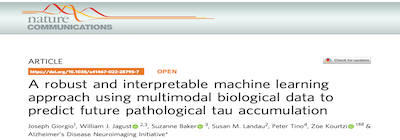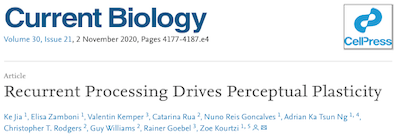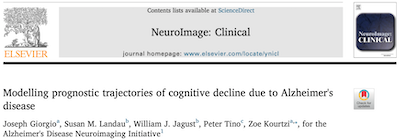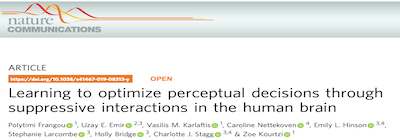Publications Overview
AI for Neuroscience
Burkhart MC, Lee LY, Vaghari, D Toh AQ, Chong E, Chen C, Tiňo P and Kourtzi Z. (2024). Unsupervised multimodal modeling of cognitive and brain health trajectories for early dementia prediction. Scientific Reports,14:10755. https://www.nature.com/articles/s41598-024-60914-w
Giorgio J, Jagust W, Baker S, Landau S, Tino P, Kourtzi Z, for the Alzheimer’s Disease Neuroimaging Initiative (2022). A robust and interpretable machine learning approach using multimodal biological data to predict future pathological tau accumulation, Nature Communications, 13, 1887
Giorgio J, Landau S, Jagust W, Tino P, Kourtzi Z(2020) Modelling prognostic trajectories of cognitive decline due to Alzheimer's disease., NeuroImage: Clinical Volume 26, 2020, 102199.
Lee LY, Vaghari D, Burkhart MC, Tino P, Montagnese M, Li Z, Zühlsdorff K, Giorgio J, Williams G, Chong E, Chen C, Underwood BR, Rittman T, and Kourtzi Z. (2024). Robust and interpretable AI-guided marker for early dementia prediction in real-world clinical settings.eClinicalMedicine, In Press. https://authors.elsevier.com/sd/article/S2589-5370(24)00304-3
Cognitive Neuroscience
Jia, K., Goebel, R., Kourtzi, Z. (2023). Ultra-high field imaging of human visual cognition. Annual Review of Vision Sciences, 15:9;479-500. https://doi.org/10.1146/annurev-vision-111022-123830
Michael, Santamaria, Leong, Kourtzi (2022). Learning at your brain's rhythm: individualized entrainment boosts learning for perceptual decisions.Cerebral Cortex, bhac426, doi.org/10.1093/cercor/bhac426
Zamboni E, Kemper VG, Goncalves NR, Jia K, Karlaftis VM, Bell SJ, Giorgio J, Rideaux R, Goebel R and Kourtzi Z (2020) Fine-scale computations for adaptive processing in the human brain, eLife 2020;9:e57637. doi: 10.7554/eLife.57637. PMID: 33170124
Jia K, Zamboni E, Kemper V, Rua C, Reis Goncalves N, Ka Tsun Ng A, Rodgers CT, Williams G, Goebel R and Kourtzi Z (2020) Recurrent Processing Drives Perceptual Plasticity, Current Biology; 30, 4177-4187. PMID: 32888488
Frangou P, Emir UE, Karlaftis VM, Nettekoven C, Hinson EL, Larcombe S, Bridge H, Stagg CJ, Kourtzi Z (2019) Learning to optimizeperceptual decisions through suppressive interactions in the human brain, Nature Communications 10:474
Karlaftis VM, Giorgio J, Vértes PE, Wang R, Shen Y, Tino P, Welchman AE, Kourtzi Z (2019). Multimodal imaging of brain connectivity reveals predictors of individual decision strategy in statistical learning, Nature Human Behaviour, 3:297-307.
Frangou P, Correia M, and Kourtzi Z (2018) GABA, not BOLD, reveals dissociable learning-dependent plasticity mechanisms in the human brain. eLife 25(Oct) eLife 2018;7:e35854
Publications from the lab are available by year: 2023, 2022, 2021, 2020, 2019, 2018, 2017, 2016, 2015, 2014, 2013, 2012, 2011, 2010, 2009, 2008, 2007, 2006, 2005 & 2000-2004.





